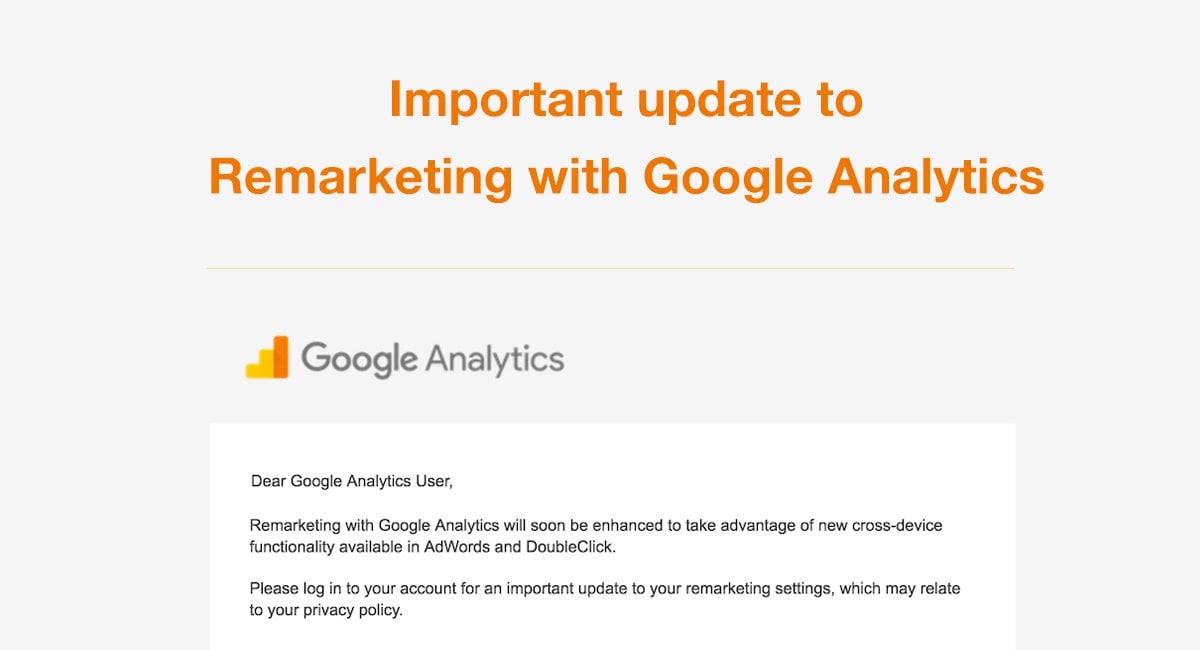Maximize Your ROI With Remarketing in Google Analytics
By utilizing the power of customer information and tailoring advertisements to details audience segments, companies can considerably amplify their conversion prices. The trip to maximizing ROI through remarketing is a nuanced course paved with understandings and opportunities that can reshape the trajectory of your advertising and marketing undertakings.
Recognizing Remarketing in Google Analytics
Understanding remarketing in Google Analytics is vital for maximizing your electronic advertising and marketing method. Remarketing allows you to target customers that have formerly seen your site or interacted with your application, providing them with customized ads as they search other websites or make use of various other apps within the Google Present Network. This strategy assists maintain your brand name top of mind and urges individuals to return to your site, ultimately raising the chance of conversion.
By utilizing Google Analytics, you can track the performance of your remarketing projects, obtaining important insights right into individual actions, involvement, and conversions. This information enables you to improve your messaging, bidding, and targeting techniques to improve the total effectiveness of your campaigns.
Furthermore, understanding the different kinds of remarketing lists offered in Google Analytics, such as common, vibrant, and similar audiences, permits you to create extremely segmented and customized projects customized to details customer sections. This degree of granularity can considerably enhance the relevance and influence of your remarketing efforts, ultimately maximizing your roi.
Setting Up Remarketing Listings
To properly carry out remarketing campaigns in Google Analytics, the first action includes producing and configuring remarketing checklists targeting specific customer segments based upon their communications with your website or application. By establishing remarketing checklists, you can customize your marketing efforts to reach users that have currently revealed interest in your service or products.
To start, navigate to the Admin area of your Google Analytics account and select the Residential property where you want to create the remarketing list. After that, under the Home column, click 'Audience Definitions' and pick 'Target markets.' Next off, click on the red 'New Target market' button and choose 'Develop New' to specify the specifications for your remarketing checklist.
Crafting Efficient Remarketing Advertisements

When crafting your advertisements, emphasis on creating attention-grabbing headlines and compelling visuals that stick out to prospective clients. Incorporate strong calls-to-action that encourage individuals to review your website and finish a desired action. Use dynamic remarketing to show individualized ads featuring products or solutions that customers have actually formerly seen on your site.
Additionally, ensure that your ads are mobile-friendly because a significant section of net web traffic comes from mobile phones. Test different advertisement variants to identify which layouts and messages drive the ideal outcomes. By continuously refining and optimizing your remarketing advertisements based upon performance information, web you can optimize their performance and enhance your return on financial investment.
Studying Remarketing Performance

With Google Analytics, marketers can track the efficiency of their remarketing campaigns in real-time, allowing them to determine patterns, patterns, and locations for improvement without delay. By examining the data, marketing professionals can determine which ads are performing well, which target market sections are reacting positively, and which channels are driving one of the most conversions. This level of granularity makes it possible for marketing professionals to make data-driven decisions to enhance their remarketing projects for much better outcomes.
Enhancing ROI With Remarketing
Evaluating remarketing data in Google Analytics allows marketers to pinpoint chances for enhancing roi (ROI) through calculated adjustments - What Is “Remarketing” In Google Analytics?. To maximize ROI with remarketing, it is essential to comprehend the actions of your audience. By evaluating user interactions, such as the pages they visited, the products they watched, or the activities they took on your website, you can tailor your remarketing campaigns better
Segmenting your target market based upon their actions permits you to create personalized and targeted advertisements website link that are much more likely to reverberate with them. By revealing pertinent advertisements to particular sectors of view website your target market, you can raise the opportunities of conversion and ultimately boost your ROI.
In addition, checking various advertisement creatives, messaging, and deals can aid recognize what reverberates ideal with your audience. A/B testing permits you to try out different elements of your advertisements to establish what drives the highest possible interaction and conversion rates.
Verdict
To conclude, making best use of ROI with remarketing in Google Analytics needs a tactical approach to analyzing customer habits, segmenting target markets, producing tailored advertisements, and enhancing campaign performance. By leveraging data-driven understandings and examining different approaches, organizations can improve their remarketing efforts to drive greater involvement and conversion prices. This methodical method ensures that sources are effectively allocated towards maximizing rois in remarketing projects.
Next, click on the red 'New Target market' button and pick 'Create New' to specify the specifications for your remarketing list.
By continually refining and enhancing your remarketing advertisements based on performance information, you can optimize their performance and improve your return on financial investment.
By delving right into these understandings, marketing professionals can acquire a comprehensive understanding of exactly how their remarketing efforts are resonating with their target audience and driving conversions. To make best use of ROI with remarketing, it is crucial to recognize the behavior of your target market.In conclusion, making best use of ROI with remarketing in Google Analytics needs a calculated method to assessing user actions, segmenting target markets, producing customized advertisements, and optimizing campaign efficiency.